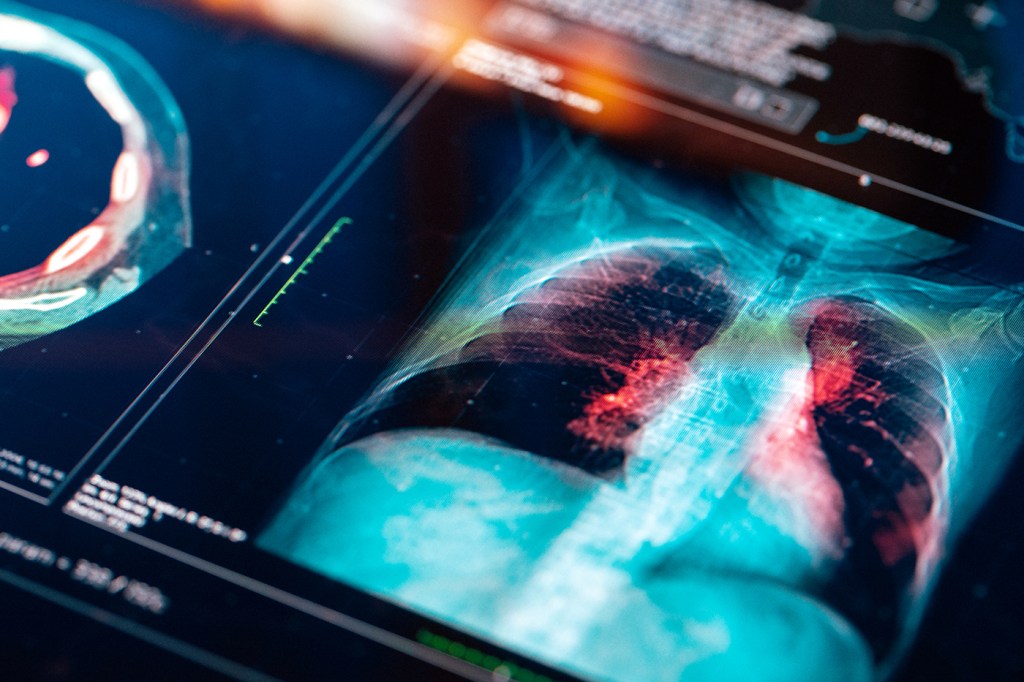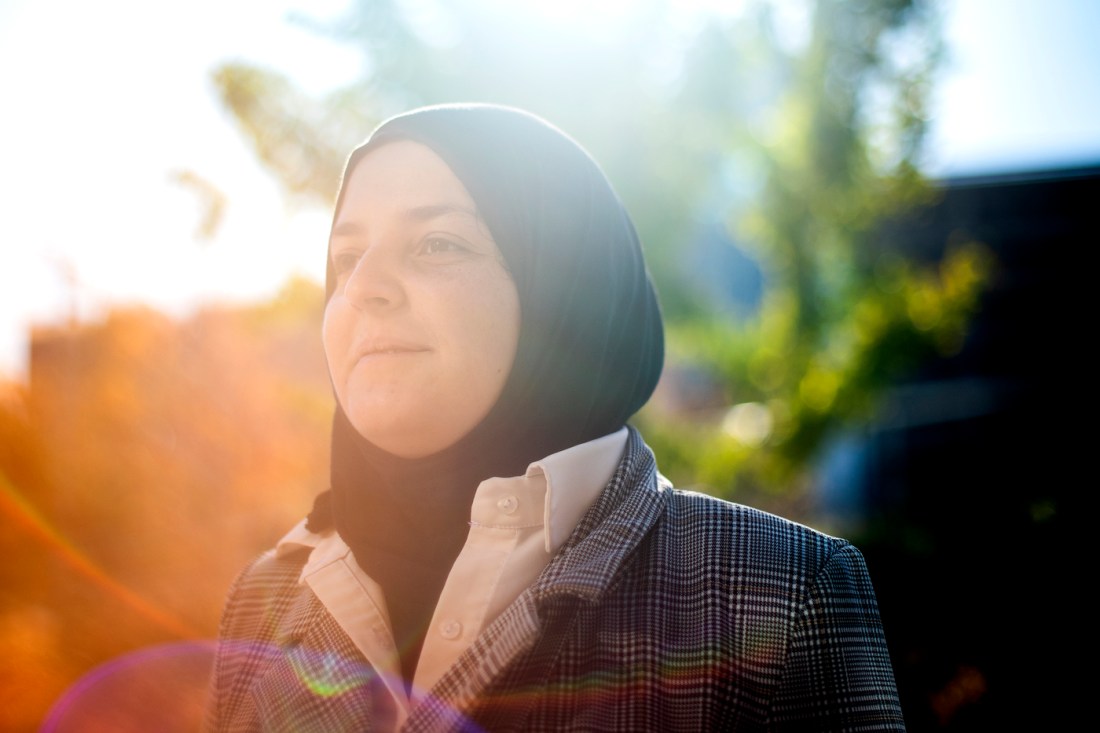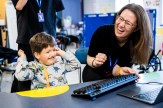Northeastern bioengineering professor receives NSF award to study pathogens in our lungs
Mona Minkara will use computational research and AI to decode the response mechanisms of the immune system to viruses.

Mona Minkara describes the protein molecules that detect and flag disease-causing pathogens in human lungs as scouts of the immune system.
Minkara, an assistant professor of bioengineering at Northeastern University, is investigating the chemical interaction involving these scouts — which are actually immunoproteins — and pathogens. She hopes the research will help scientists bolster the immune system and promote the development of new methods of treating airborne diseases such as COVID-19, RSV and the flu.
Immunoproteins make up 10% of the lung surfactant — a film-like layer that covers the many tiny air sacs of the lungs. The air sacs are called alveoli.
“It is our first line of defense,” says Minkara, who was recognized by the National Science Foundation with a prestigious CAREER Award. “These proteins are designed to identify pathogens, attach onto them, and then signal to the immune system to kill them.”
The award will help Minkara research the interaction between the surfactant proteins and pathogens such as viruses.

Research has previously shown, Minkara says, that immunoproteins interact with pathogens on the alveoli’s surface through glycans, a type of sugar. Viruses use glycans to take over healthy cells and cause illness.
Minkara is investigating how immunoproteins identify these glycans. The idea, she explains, is to understand the chemical interactions that play a role in identifying pathogens. She likens it to deciphering the code of the glycan.
“Are there certain, say, communication techniques? Chemical interactions?” she says. “Can we categorize them?”
Minkara is especially interested in the medical applications of her research. It is particularly relevant for any respiratory viral disease, from COVID-19 to the flu to RSV, anything that can be contracted through inhalation.
Featured Posts
Immunoproteins are also found elsewhere in the body, she says, including in tears, eyes, ears, nose, mouth, skin, GI tract, urinary tract and reproductive tract — all parts exposed directly to outside pathogens.
“People have not really thought about, ‘Hey, maybe we can look at what our body is doing. Can we enhance it? Can we understand it?’ It’s just a different lens,” Minkara says.
She contrasts this with traditional antiviral treatments, which typically aim to block the virus from its action. Minkara’s approach seeks to enhance the body’s natural defenses.
“If you have the flu and you take a TheraFlu, the antiviral that is designed to block the virus,” she says. “Those are usually the therapeutic mechanisms. What I’m doing is saying, ‘Well, hold on, maybe we can help enhance what our body is naturally doing.’
“It’s an antiviral that is designed to just block the virus from its action. Those are usually the therapeutic mechanisms.”
Minkara chose this area of research because her graduate school work focused on proteins, and her postdoctoral research was about chemical compounds also called surfactants that similarly to lung surfactant reduce surface tension, mix with water and oil and are used in soaps and shampoos.
“What’s fascinating is that on the surface of your alveoli, you have areas that are more lipid-based, or oily, and areas that are more water-based,” Minkara says. “That’s why you need these surfactant proteins — to be able to kind of be in both locations.”
Lung surfactant prevents lungs from collapsing.
“I got trained for proteins, I got trained for surfactants. I was able to bring my training from both of those backgrounds,” Minkara says. “There are very few computational scientists with this level of knowledge.
Minkara conducts her research solely on computers, modeling and simulating the interactions between immunoproteins and viruses using experimental data from other researchers.
Sometimes, her modeling is based solely on chemistry without experimental data.
“It’s all based on chemistry,” she says. “That’s kind of the power of computation.”
Her calculations are conducted using the Discovery Cluster, Northeastern’s high-performance computing resource.
“That’s kind of another level of the advantage that I bring to the table,” Minkara says, “using computation to gather as much data as possible and find patterns in it.”











